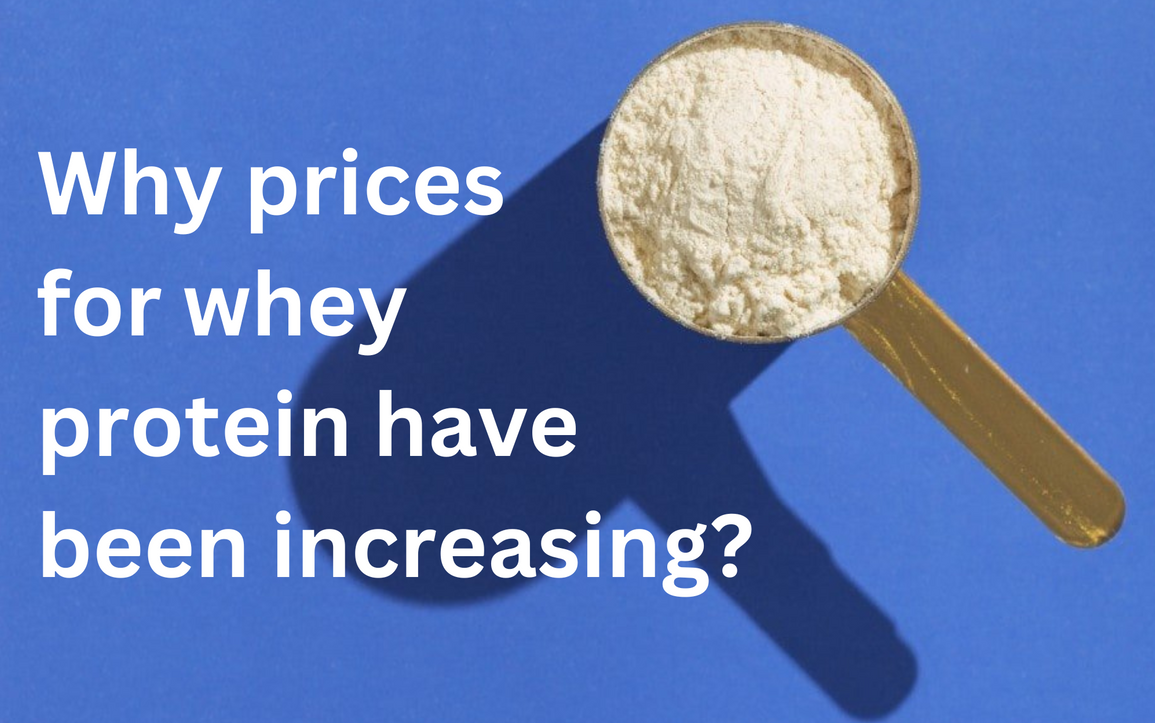Posted by Kaha Nutrition on 22nd Apr 2023
The Whey Up: Understanding the Rising Prices of Whey Protein
In recent years, fitness enthusiasts and health-conscious consumers alike have noticed a significant increase in the prices of whey protein products. Widely regarded as an essential supplement for muscle building and recovery, the demand for whey protein has skyrocketed, leaving many wondering why they're paying more for their favourite workout companion. This article delves into the factors behind the rising costs of whey protein and what to expect moving forward.
1. Growing demand for protein-rich diets
One of the primary reasons behind the surge in whey protein prices is the growing popularity of protein-rich diets, such as the ketogenic and paleo diets. These dietary approaches emphasize the consumption of high-quality protein sources, driving up the demand for whey protein supplements. Furthermore, the increasing awareness of the benefits of protein for muscle growth, recovery, and overall health has led to a surge in demand from fitness enthusiasts, athletes, and casual consumers.
2. Rising production costs
Whey protein is a byproduct of cheese production, and as the demand for cheese and dairy products has increased, so too have the costs associated with producing these goods. Factors such as higher feed costs for dairy cows, increased labor costs, and heightened energy expenses all contribute to the rising production costs. Consequently, these costs are passed on to consumers in the form of higher whey protein prices.
3. Global supply chain disruptions
The COVID-19 pandemic has wreaked havoc on global supply chains, resulting in widespread disruptions that have affected numerous industries, including the whey protein market. Transport restrictions, labor shortages, and logistical challenges have all played a role in driving up the cost of producing and distributing whey protein products. As the world continues to grapple with the pandemic's aftermath, it's likely that these disruptions will persist and continue to impact prices.
4. Fluctuating currency exchange rates
As a globally traded commodity, whey protein is subject to fluctuations in currency exchange rates. The ongoing economic uncertainty and geopolitical tensions have led to volatile exchange rates, which can impact the cost of importing and exporting whey protein. As a result, consumers may see higher prices as manufacturers attempt to mitigate the risks associated with currency fluctuations.
5. Environmental concerns
Environmental concerns have also played a role in the rising prices of whey protein. The growing awareness of the environmental impact of animal agriculture has led to increased scrutiny of dairy farming practices. This has resulted in stricter regulations and the implementation of more sustainable practices, which, while beneficial for the environment, can also drive up production costs.
Conclusion
The rising prices of whey protein can be attributed to a multitude of factors, including growing demand, increased production costs, global supply chain disruptions, currency exchange rate fluctuations, and environmental concerns. As the fitness and health industries continue to expand, it's likely that the demand for whey protein will remain high. Consumers can expect to see prices continue to fluctuate as the market adapts to these ongoing challenges. While this may be a concern for some consumers, it is essential to remember that the quality and efficacy of the product should be the primary consideration when choosing a supplement.

